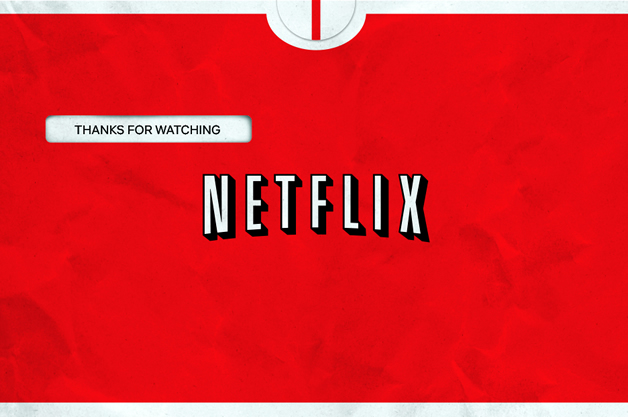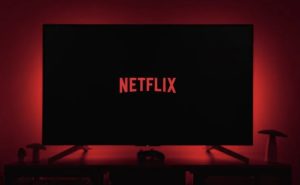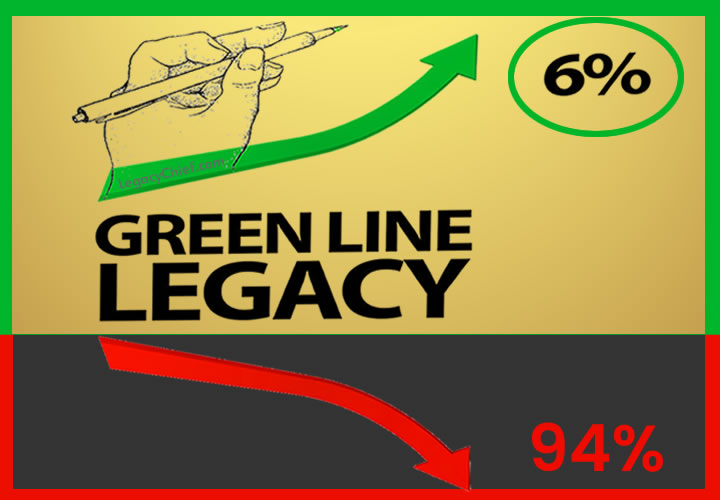It’s hard to believe Netflix is 25 years old

The Remarkable Tale of Netflix Over 25 Years: “From DVD Rentals to Streaming Giant”
Netflix, a household name today, has transformed the way the world consumes entertainment. From its humble beginnings as a DVD rental service, it has evolved into a global streaming giant, redefining the entertainment landscape. In this comprehensive journey through Netflix’s history, we explore key milestones, innovative strategies, and the cultural impact that has made it an entertainment colossus.
It’s astonishing to think that Netflix, now a $100 billion company, began as a humble DVD rental startup twenty years ago. When Reed Hastings and Marc Randolph founded what was initially known as Kibble in 1997, their venture seemed nothing more than a convenient mail-order movie rental service. Yet, two decades later, Netflix has transformed into a global powerhouse, rivaling even the largest TV and movie studios, boasting more subscribers than all of America’s cable TV channels combined. The question that lingers: how did Netflix evolve from a movie rental service into a media behemoth in just two short decades?
The answer lies in Netflix’s unwavering commitment to doing the obvious – a paradoxical approach that often led them down the road less traveled. Instead of opting for the easy path, they made bold and challenging business decisions that few could fathom, let alone embrace. Netflix’s innovation journey encompassed several key milestones: they began with a frictionless DVD rental model enabled by the internet, then pioneered an entirely new streaming service, and ultimately ventured into original content creation. However, the crux of their journey was built on moves that, in retrospect, appear logical but were far from apparent in their early days.
Let’s delve into the pivotal aspects that shaped Netflix’s meteoric rise:
1. The Power of a Single Growth Metric: Netflix built its foundation around a single growth metric, a move that its competitors often overlooked. This unique approach underpinned their success and set them on an unconventional trajectory.
2. From DVDs to Streaming: The transformation from a DVD rental service to a cutting-edge online streaming platform was a monumental leap. Netflix’s ability to evolve and adapt to changing consumer preferences was a testament to their foresight and determination.
3. Original Content as a Growth Engine: Netflix’s foray into original content production became a powerful catalyst for customer acquisition and sustained growth. It propelled them from being a mere distributor to a prominent content creator.
Netflix’s journey is a testament to how the landscape of entertainment consumption has shifted over the years, influenced by evolving technologies and consumer behaviors. It wasn’t all smooth sailing, as Netflix faced numerous challenges along the way that could have sunk lesser companies. Still, their resilience and innovative spirit prevailed.
We will explore how Netflix’s growth was propelled by changes in how, when, and where we consume entertainment. We’ll also examine the challenges that threatened their existence and speculate on the exciting possibilities that lie ahead for this entertainment giant.

TIMELINE of NETFLIX
1997-2006: From Video Rentals by Mail to Smart Suggestions by Algorithm
To an outsider, Netflix might appear incredibly lucky. Every shift and trend in the home entertainment market seemed tailor-made for Netflix to seize. However, their early victories were not born of luck but rather an acute understanding of their market. While their initial business revolved around DVDs, Hastings and Randolph harbored no illusions about staying in the DVD business indefinitely – even when no one else shared their vision.
Marc Randolph articulated their early challenge and triumph: “One of the biggest challenges that we had, which I think is also one of the things we did very well, is recognize very early on that if we were going to be successful, we had to come up with a premise for the company that was delivery agnostic. But if we were to come out and say, ‘This is all about downloading or streaming,’ and we said that in 1997 and ’98, that would have been equally disastrous. So we had to come up with a positioning which transcends the medium.”
The legend goes that Reed Hastings conceived Netflix after returning a copy of “Apollo 13” to Blockbuster and facing a $40 late fee. Driven by this experience and a belief in a better way to rent movies, Hastings began crafting what would eventually become Netflix. Although the story’s accuracy has been debated, Netflix undeniably set out to revolutionize movie rentals.
In 1997, when Blockbuster reigned supreme, Netflix’s mail-order DVD rental service stood out as something unique. While many perceived Netflix primarily as a movie distribution service, Hastings and Randolph envisioned something grander. They saw an opportunity to leverage the internet to decentralize entertainment and liberate premium TV from the monopolistic grasp of Big Cable. Their aim was to gain a foothold in a fiercely competitive market, and DVD rentals were just the first step.
In 1997, Netflix made its debut with approximately 900 titles in its video library and a strict 7-day maximum rental policy.
On August 29, 1997, co-founders Reed Hastings and Marc Randolph incorporated a video business called Kibble headquartered in Scotts Valley. Before it became Netflix, Kibble was a subscription-based service that offered DVD rentals by mail. However, the name was changed to Netflix shortly before the official launch of the service in 1998. The name “Netflix” was chosen to reflect the combination of “internet” and “flicks” (a colloquial term for movies), emphasizing the company’s focus on online movie rentals.
1999: Revolutionizing Movie Rentals with Subscription Models
By April 1999, their catalog expanded to 3,100 titles, with rentals initially priced at just 50 cents each. By January 2000, Netflix’s library had grown to a staggering 5,200 titles.
The stage was set for Netflix’s remarkable journey from DVD rentals to the streaming giant we know today. Stay tuned to explore the chapters of Netflix’s evolution and the profound impact they’ve had on the world of entertainment.
In 1999, Netflix made a groundbreaking announcement that would change the way people rented movies. They introduced a subscription model priced at $15.95, allowing members to rent up to four movies simultaneously, with no return-by dates. This move shattered the conventional pay-per-rental approach of the time.
2000: The End of Late Fees and Birth of Monthly Subscriptions
Building on their innovative streak, Netflix made a strategic move in 2000 by eliminating late fees and return-by dates. In their place, they introduced a monthly subscription plan priced at $19.95. This shift not only delighted customers by removing the specter of late fees but also laid the groundwork for a more user-friendly rental experience.
2002: Netflix Goes Public
Netflix’s journey took another significant step in 2002 when the company filed for its initial public offering (IPO) on May 22. Initially valued at $15 per share, this move marked a pivotal moment in Netflix’s history as it opened the doors to a wider pool of investors.
2000-2003: Navigating Growth and Financial Challenges
Throughout the early 2000s, Netflix experienced steady growth in revenue and subscribers. However, the company was still grappling with financial challenges, reporting a loss of $4.5 million in Q1 of 2002. Much of this financial setback stemmed from increased operational expenses compared to the previous year.
2003-2006: Personalizing the User Experience with Cinematch
Netflix continued to evolve its subscriber experience between 2003 and 2006. They introduced a game-changing feature: personalized movie recommendations and suggestions based on the Cinematch ranking algorithm. This innovation allowed subscribers to curate queues of titles tailored to their preferences, streamlining the movie rental process.
Xavier Amatriain highlighted the rationale behind this development: “For DVDs, our goal is to help people fill their queue with titles to receive in the mail over the coming days and weeks; selection is distant in time from viewing, people select carefully because exchanging a DVD for another takes more than a day, and we get no feedback during viewing.”
By the end of 2006, Netflix had surged to over 6.3 million subscribers, boasting a remarkable 7-year annual compound growth rate of 79%. Crucially, the company had also achieved profitability, recording more than $80 million in profits in 2006 alone. This incredible ascent was fueled by a profound commitment to a singular North Star metric: “movies watched.”
In contrast to traditional cable TV channels that measured their success by viewership, Netflix adopted a unique perspective. They focused on how many movies or shows each viewer consumed, effectively optimizing for “movies watched” per individual user. This subtle but pivotal shift allowed Netflix to continuously engage viewers and refine its core metric, aided by the innovative CineMatch recommendation algorithm.
While critics initially questioned the viability of Netflix’s subscription-based model, it turned out to be the linchpin of their success. It positioned Netflix as a service where users could enjoy unlimited viewing for a fixed monthly fee, diverging from the prevalent pay-per-rental model. This innovative approach, combined with competitive pricing, conferred greater convenience and value to consumers in a crowded market.
Bob Gilbreath emphasized the role of subscriptions: “While there are many explanations for the growth of subscriptions, it is undeniably driven in part by a frustration with the onslaught of advertising that we are subject to. Advertising has always been a ‘tax’ on our attention.”
In the early 2000s, when the internet was still finding its footing, a small DVD rental service emerged with a novel idea—rent DVDs online and have them delivered to your doorstep. That service was Netflix, and little did anyone know that it would transform not only how we watch movies and TV shows but also the entire entertainment industry. This article explores Netflix’s remarkable journey, from its humble beginnings in DVD rentals to its current status as a global entertainment behemoth. Along the way, we’ll delve into key milestones, game-changing decisions, and the valuable lessons Netflix offers to businesses of all sizes.
The financial hurdles faced by Netflix during 2000-2003 necessitated diversification of their service offerings. The groundwork for their future streaming service had already begun. Behind the scenes, Netflix invested heavily in delivering a more personalized experience through recommendations powered by the CineMatch algorithm.
By today’s standards, CineMatch may seem rudimentary, but at the time, it was remarkably accurate. The algorithm considered three critical factors for its recommendations: Netflix’s movie catalog, subscriber ratings, and collective ratings of specific titles based on all subscribers’ feedback.
CineMatch served a dual purpose. First, it addressed the pressing issue of subscriber churn, ensuring that users had a continuous stream of content to enjoy. Second, it facilitated easier content discovery, aligning with Netflix’s mission to enhance the user experience. This marked the onset of a heightened focus on the Netflix experience, aimed at eliminating the frustration of choosing an unsatisfying movie.
Netflix’s growth strategy for 2007 focused on expanding its DVD subscriber base, anticipating the impending shift from rentals to streaming. Reed Hastings articulated their strategic vision: “Our strategy for achieving online movie rental leadership is to continue to aggressively grow our DVD subscription business and to transition these subscribers to Internet video delivery as part of their Netflix subscription offering.”
While the path to streaming was laden with challenges, Netflix’s unwavering commitment to reducing friction in entertainment consumption led them to take a bold step. In 2007, they launched their first streaming product, Watch Now, despite minimal consumer demand for streaming video. This audacious move, while radical, aligned with their mission of making entertainment more accessible.
Netflix invested over $40 million in developing streaming technology that year, a bold wager on a future where streaming would become the new norm. While others hesitated, Netflix was ahead of the curve, equipping themselves with the best technology, the most extensive content library, and the largest subscriber base, ensuring their position as a pioneer in the streaming industry.
In 2007, Netflix unveiled Watch Now, offering 1,000 titles within their $5.99 per month DVD subscription tier. This leap into streaming marked a significant milestone in Netflix’s journey, setting the stage for what would become a transformative era in the world of entertainment.
2008: The Streaming Revolution Begins
In 2008, Netflix made a surprising announcement—it would cease DVD retail sales, a reliable revenue stream for the company, just one week after launching Watch Now on Mac platforms. This decision raised eyebrows and signified that retail sales were not part of Netflix’s long-term growth strategy. This bold move coincided with a groundbreaking partnership between Netflix and the premium American cable TV network Starz. This partnership gave Netflix subscribers access to an impressive library of over 2,500 movies and TV shows.
Netflix’s foray into streaming video was a pivotal moment in its history. At the time, the company faced doubts from analysts and investors, and audiences were underwhelmed by its new platform. While some founders might have backtracked, Reed Hastings, Netflix’s co-founder, and CEO, pressed forward with his vision for streaming video. What made this transition so brilliant was that few others recognized the value in pursuing streaming video. The demand was low, but Netflix was positioned to innovate with relatively little competition.
Furthermore, Netflix secured cost-effective licensing deals with networks like Starz, enabling access to a vast content library. In 2008, Netflix and Starz inked a four-year agreement reportedly worth $30 million, granting Netflix access to a library of 2,500 Starz titles. While the quality of some titles may have been lacking, Netflix was building the foundation for its future streaming service, all while facing virtually no meaningful competition.
Reed Hastings captured the essence of this transformation when he stated, “While mainstream consumer adoption of online movie watching will take a number of years due to content and technology hurdles, the time is right for Netflix to take the first step. Over the coming years, we’ll expand our selection of films, and we’ll work to get to every Internet-connected screen, from cell phones to PCs to plasma screens.”
Ultimately, Hastings’s bet on streaming video paid off, marking the beginning of Netflix’s transformation into the entertainment giant we know today. The introduction of streaming also revealed a critical weakness—few were content watching movies on their PCs or laptops using Internet Explorer. However, this demand for streaming was just the beginning, setting the stage for Netflix to create a better streaming product with broader appeal.

2011: The Qwikster Fiasco
In 2011, Netflix made headlines once again, but this time, it was met with backlash and controversy. The company announced a major rebranding effort for its DVD rental business, introducing the term “Qwikster.” Simultaneously, Netflix revealed plans to separate its streaming and DVD rental services into two distinct subscription packages—Netflix for streaming and Qwikster for rentals.
This announcement sent shockwaves through its subscriber base and the investor community. Subscribers and investors alike voiced their discontent, reigniting debates about the company’s future. Many saw this move as a cash-grab, as customers would now have to pay separate subscription fees for DVD rentals and streaming. This decision proved deeply unpopular and led to around 800,000 subscribers abandoning the service.
Critics and analysts seized upon the Qwikster incident as evidence of Netflix’s imminent decline. Less than a month after the announcement, before Qwikster even officially launched, Reed Hastings abandoned the plan entirely. It was a humbling moment for Netflix, but it also showcased the company’s ability to listen to its customers and respond swiftly.
In an unusually candid blog post, Hastings assumed full responsibility for the Qwikster debacle, acknowledging poor executive decision-making and lack of respect and humility in the way the changes were announced. Netflix’s response turned the incident into a positive exercise in damage control and executive accountability.
“I messed up. I owe everyone an explanation. It is clear from the feedback over the past two months that many members felt we lacked respect and humility in the way we announced the separation of DVD and streaming, and the price changes. That was certainly not our intent, and I offer my sincere apology.” – Reed Hastings
Netflix had successfully managed a potentially company-sinking crisis, demonstrating its adaptability and commitment to customer satisfaction.
2011: Growth Amid Challenges
Despite the turbulence caused by the Qwikster incident, Netflix ended 2011 on a high note. Between the launch of Watch Now in 2007 and the close of 2011, the company’s subscriber base swelled from 6 million to an impressive 23 million—an astonishing 283% growth in just four years.
The launch of Watch Now in 2007 epitomized Reed Hastings’s vision for Netflix. Faced with skepticism from analysts and investors and a lukewarm reception from audiences, Hastings persisted with his streaming plans. What set Netflix apart was its early recognition of the potential of streaming video when few others did. With low perceived value and little competition, Netflix was able to innovate and secure cost-effective licensing deals with networks like Starz.
The Qwikster incident, while a setback, didn’t deter Netflix from its growth trajectory. It had learned valuable lessons in humility and customer-centricity. By the end of 2011, Netflix had demonstrated its ability to adapt and evolve while staying true to its core vision.
2013: The Birth of Netflix Originals
In 2013, Netflix embarked on a new chapter in its journey by venturing into original programming with the debut of “House of Cards,” a high-profile political drama. Though Netflix did not disclose viewership data, Nielsen estimated that “House of Cards” consistently attracted audiences comparable to major cable network TV shows.
This move into original content was a game-changer for Netflix. It signaled not only the emergence of Netflix Originals but also the company’s commitment to producing high-quality content. “House of Cards” was marked by a substantial budget of $100 million, setting new standards for TV production. The series featured Hollywood heavyweights like director David Fincher and actor Kevin Spacey, enhancing its appeal.
However, the true innovation of “House of Cards” lay in its release strategy. Netflix released the entire first season at once, popularizing binge-watching. This user-centric approach revolutionized how we consume television, setting Netflix apart from traditional networks.
2015: A Brave New World of Filmmaking
In 2015, Netflix released “Beasts of No Nation,” its first feature film. The movie, with a budget of $6 million, portrayed the horrors of war through the eyes of a child soldier in an unnamed African country. What made this release truly groundbreaking was that Netflix simultaneously premiered it on its streaming platform and in a limited U.S. theatrical release.
However, this bold move drew opposition from major American cinema chains, claiming that Netflix’s simultaneous streaming release violated the traditional 90-day exclusivity windows for theaters. While “Beasts of No Nation” did not perform well at the box office, grossing just $50,699 nationwide, it found success on Netflix’s streaming service. This clash with traditional theaters marked another instance where Netflix disrupted industry norms, further solidifying its status as a transformative force.
2016: The Global Expansion
In 2016, Netflix embarked on a seismic global expansion. It simultaneously went live in 130 countries, transitioning from an American company to a global media powerhouse. This bold move attracted over 7 million new subscribers in Q4 2016. Concurrently, Netflix received a staggering 54 nominations at the 68th Primetime Emmy Awards for its original programming, while Amazon garnered only 16 nominations for its own content.
This expansion strategy was not just about geographical reach; it was also about partnerships. Netflix collaborated with cellular and cable providers in each region, enabling rapid subscriber acquisition without extensive advertising or licensing agreements. This approach set the stage for producing popular foreign content for English-speaking audiences and creating a virtuous cycle of growth.
2017: The Tipping Point
In 2017, Netflix achieved a milestone that few would have predicted—it surpassed the total number of cable TV subscribers in the United States. This monumental achievement solidified Netflix’s position as the largest entertainment provider in the country. Simultaneously, Netflix announced plans to allocate $8 billion for content in 2018, a $2 billion increase from the previous year.
Q4 of 2017 witnessed another remarkable feat as Netflix added 8.3 million new subscribers, setting a new quarterly growth record with an 18% year-over-year increase. This surge coincided with the return of fan-favorite shows like “Stranger Things,” “Black Mirror,” and “The Crown.” Netflix had successfully transformed itself from a disruptor to the dominant force in the entertainment industry.
Quality remained paramount for Netflix. Original productions, such as “Money Heist” and “Dark,” showcased international talent. The company’s data-driven approach to content creation, using viewer preferences to tailor recommendations and develop new programming, set it apart.
Netflix continued to invest heavily in content, increasing its budget to $8 billion in 2018, and planning approximately 700 Netflix Originals. As competition intensified, Netflix sought to maintain its reputation for high-quality content.
2023: The 25th birthday
In August 2023, Netflix hit its 25th birthday.
This 29th of September 2023, in the United States, Netflix will shut down its DVD-by-mail rental service ending the streaming giant’s original business model. The DVD-by-mail service at one time boasted more than 16 million subscribers. Netflix stopped disclosing how many people still use DVD-by-mail delivery years ago. The DVD service generated $145.7 million USD in revenue in 2022, which translated into somewhere between 1.1 million and 1.3 million subscribers.
Netflix ended March 2023 with 232.5 million worldwide subscribers to its video streaming service. The growth of Netflix’s video streaming service has been slowing down over the past year, prompting management to put more emphasis on boosting profits.
Netflix’s Path Forward
As Netflix continues to shape the future of entertainment, it faces intensifying competition from rivals like Amazon and Hulu. To maintain its leadership position, Netflix has several potential growth avenues:
1. Augmented and Virtual Reality (AR/VR) Content: While initially skeptical about AR and VR, Netflix may need to embrace these technologies to stay at the forefront of home entertainment.
2. Data-Driven Content: With vast user data at its disposal, Netflix can use data-driven insights to create even better programming tailored to audience preferences.
3. High-Profile Acquisitions: In an era of media consolidation, Netflix might explore strategic acquisitions of major media publishers to bolster its content offerings and stay ahead of the competition.
Netflix’s journey offers valuable lessons to businesses:
1. Identify a Growth Metric: Early-stage businesses should identify a core growth metric, make it accessible to the entire team, and set goals aligned with it.
2. Obvious Moves Aren’t Necessarily Wrong: Don’t shy away from making obvious moves that benefit your customers and improve your product.
3. Focus on Quality: Prioritize quality in your product, customer support, onboarding, and documentation, even if it means higher costs.
Netflix’s story, from a small DVD rental service to a global entertainment powerhouse, demonstrates the importance of innovation, adaptability, and unwavering commitment to user experience. As it charts its future, Netflix’s possibilities are boundless, and it continues to shape the entertainment landscape.
Netflix’s Impact on Entertainment
- Disruption: Netflix disrupted traditional television and movie distribution, leading to cord-cutting and changes in consumer viewing habits. Discuss the broader impact of streaming on the industry and how Netflix played a central role in this transformation.
- Global Original Content: Highlight the success of Netflix’s international original content, such as “Money Heist” (La Casa de Papel) from Spain and “Dark” from Germany. These shows not only attracted global audiences but also demonstrated Netflix’s commitment to diverse storytelling from around the world.
- Challenges in Content Licensing: Netflix’s transition from licensing content to producing original content is crucial to its evolution. Discuss the challenges Netflix faced when studios and networks started to withdraw their content from the platform to launch their streaming services, creating a more competitive landscape.
- Innovation in User Experience: Explore how Netflix continually improves its user interface and recommendation algorithms, enhancing user experience. Mention Netflix’s focus on personalization and how it tailors content recommendations to individual viewers.
- Technology and Infrastructure: Explain the technological advancements that have enabled Netflix to stream high-quality content globally. This includes its use of content delivery networks (CDNs), adaptive streaming, and investments in data centers.
- Competitors and Market Position: Provide more insights into how Netflix compares to competitors like Disney+, Amazon Prime Video, and Hulu. Discuss the challenges Netflix faces in retaining its market leadership amidst the growing competition.
- Financial Evolution: Track Netflix’s financial journey, from its early struggles with profitability to its significant investments in content production and its strategies for funding this content creation.
- Social and Cultural Impact: Describe how Netflix shows, like “Stranger Things” or “The Witcher,” have become cultural phenomena and have influenced popular culture, merchandise, and even video game adaptations.
- The Future of Netflix: Consider discussing Netflix’s future strategies, including its plans for continued international expansion, investment in gaming, or potential partnerships in the evolving entertainment landscape.
- Challenges and Risks: Acknowledge potential challenges and risks that Netflix may face in the coming years, such as regulatory issues, content saturation, or evolving viewer preferences.
Incorporating these aspects into the article would provide a more comprehensive overview of Netflix’s journey and its ongoing evolution in the dynamic entertainment industry.
Competition and Future Strategies
Competitors like Disney+ and Amazon Prime Video emerged, intensifying the streaming wars. Netflix’s challenge was to retain its market leadership and continue innovating. It explored augmented and virtual reality content, despite initial skepticism from its CEO Reed Hastings.
Strategic acquisitions, such as the purchase of Millarworld, hinted at Netflix’s willingness to adapt to a changing media landscape.
The Road Ahead
While Netflix’s journey has been remarkable, challenges lie ahead. Regulatory issues, content saturation, and evolving viewer preferences pose risks. However, Netflix’s ability to adapt, invest in quality content, and embrace emerging technologies positions it for continued success.
Conclusion
Netflix’s evolution from a DVD rental service to a global streaming powerhouse reflects the company’s commitment to innovation and quality. Its impact on the entertainment industry, from binge-watching culture to global content production, cannot be overstated. As Netflix navigates a rapidly changing landscape, it remains a compelling case study in business transformation and resilience, defying expectations and continuing to shape the future of entertainment.
Discover More about Netflix:
Netflix site Netflix.com
Here are seven websites that were known for providing news and information about Netflix:
- Variety: variety.com
(variety.com): Variety is a reputable entertainment news source that covers a wide range of topics, including Netflix. They often report on Netflix’s latest releases, acquisitions, and industry developments. - The Hollywood Reporter: hollywoodreporter.com
(hollywoodreporter.com): Similar to Variety, The Hollywood Reporter offers comprehensive coverage of the entertainment industry, including news and analysis related to Netflix. - Deadline: deadline.com
(deadline.com): Deadline is another prominent source for entertainment industry news, including Netflix-related updates, casting announcements, and business developments. - IGN: ign.com
(ign.com): IGN covers various aspects of entertainment, including streaming services like Netflix. They provide reviews, news, and features on Netflix original series and films. - Collider: collider.com
(collider.com): Collider covers a wide range of entertainment topics, including Netflix. They often provide reviews, interviews, and news related to Netflix content. - IndieWire: indiewire.com
(indiewire.com): IndieWire focuses on independent and mainstream entertainment news, including coverage of Netflix’s original content and industry trends. - The Verge: theverge.com
(theverge.com): While primarily known for its tech coverage, The Verge also reports on streaming services like Netflix, discussing not only content but also the technology and business aspects.
Additionally, consider checking out official Netflix press releases and social media channels for the most up-to-date information directly from the company.
P.S. To keep with the theme of “legacy worthy” – Netflix’s impact on the way we consume media and its ability to shape the future of entertainment make it a legacy-worthy company.
Netflix is unquestionably a legacy-worthy company due to its groundbreaking role in transforming the entertainment industry through streaming. It has a global reach, produces acclaimed original content, fosters innovation, boasts a massive subscriber base, and has made a significant cultural impact—all of which contribute to its legacy-worthy status. Its financial success, content diversity, industry influence, adaptability, and longevity further solidify its legacy-worthy status. Netflix’s influence on how we consume media and shape the future of entertainment unmistakably marks it as a company with a lasting impact on the industry and popular culture, firmly establishing its legacy-worthy reputation.
Netflix’s influence on the entertainment industry and popular culture is likely to be studied and remembered for years to come as a legacy worthy trailblazer.



